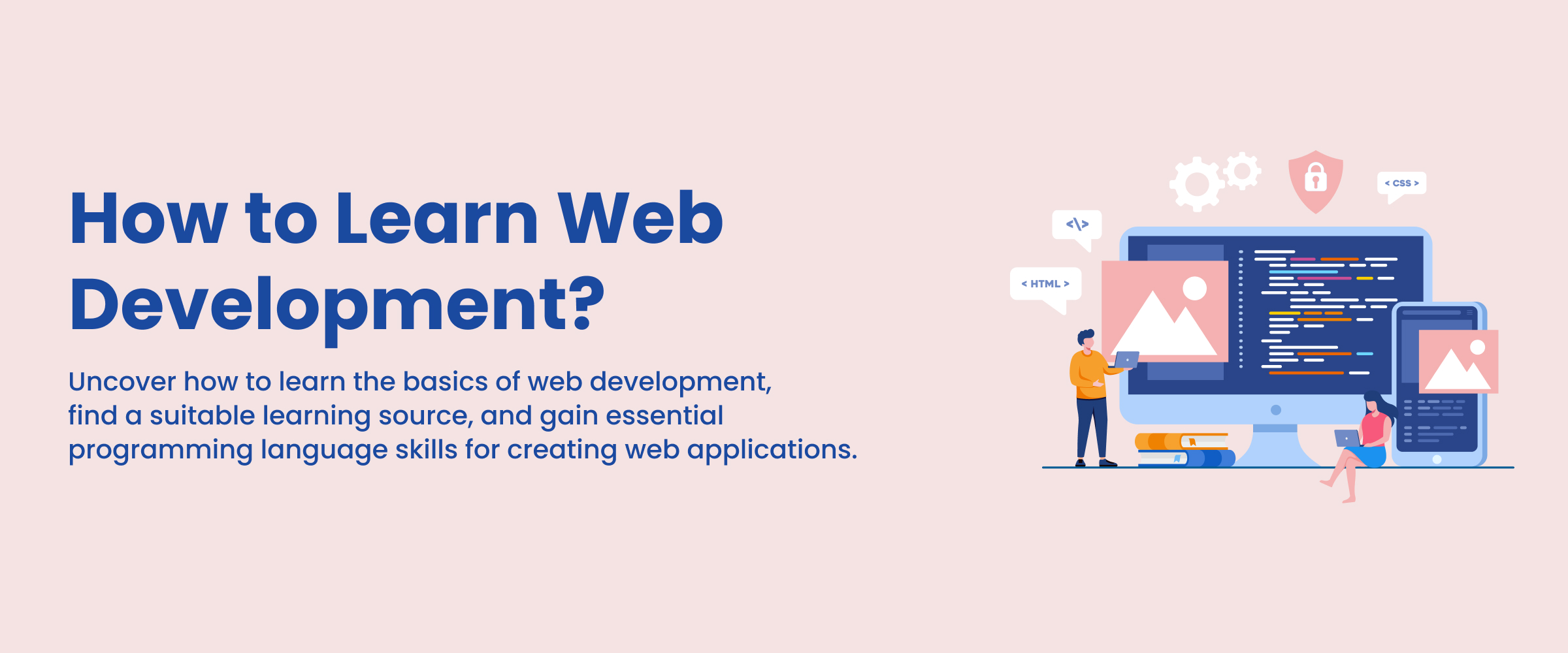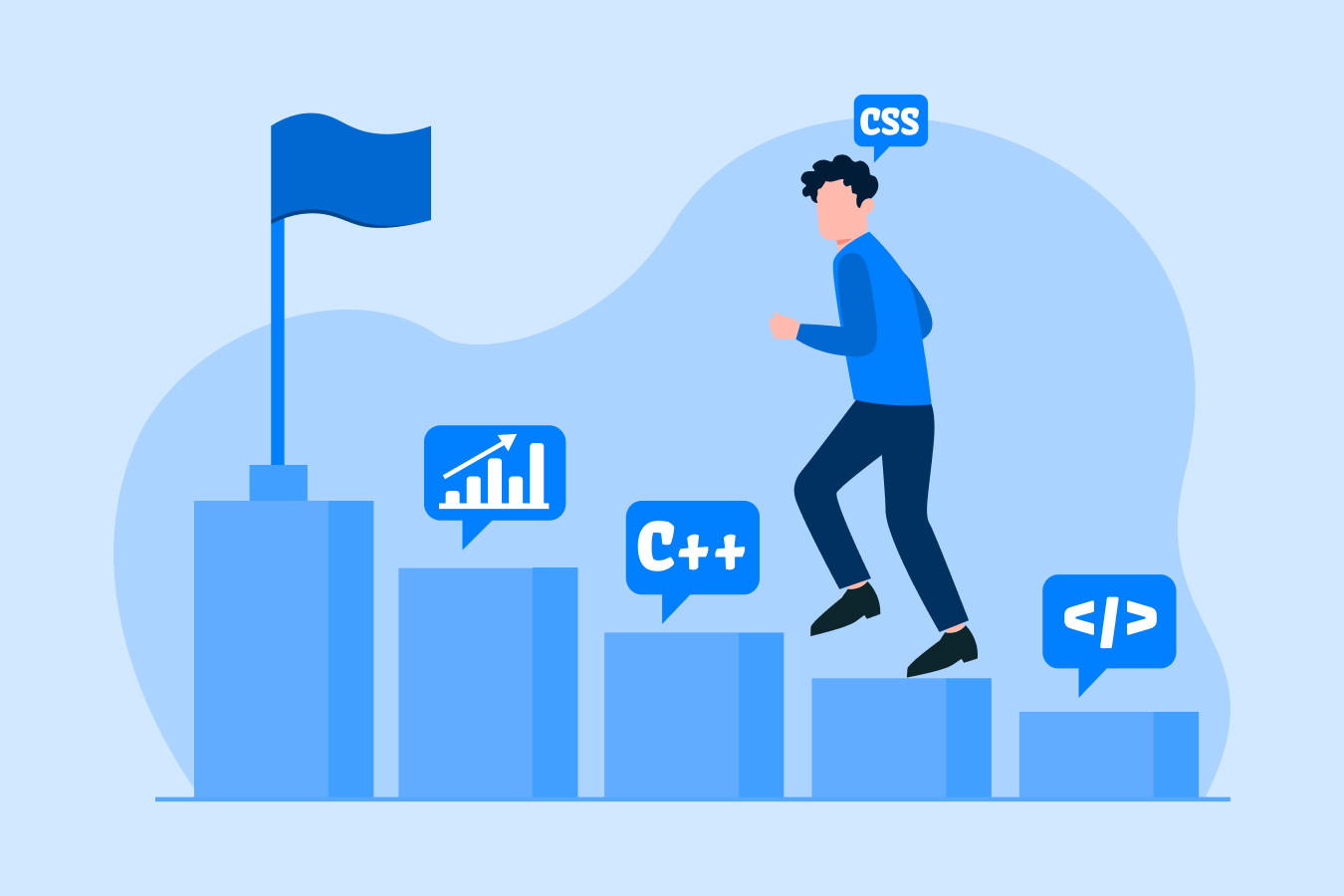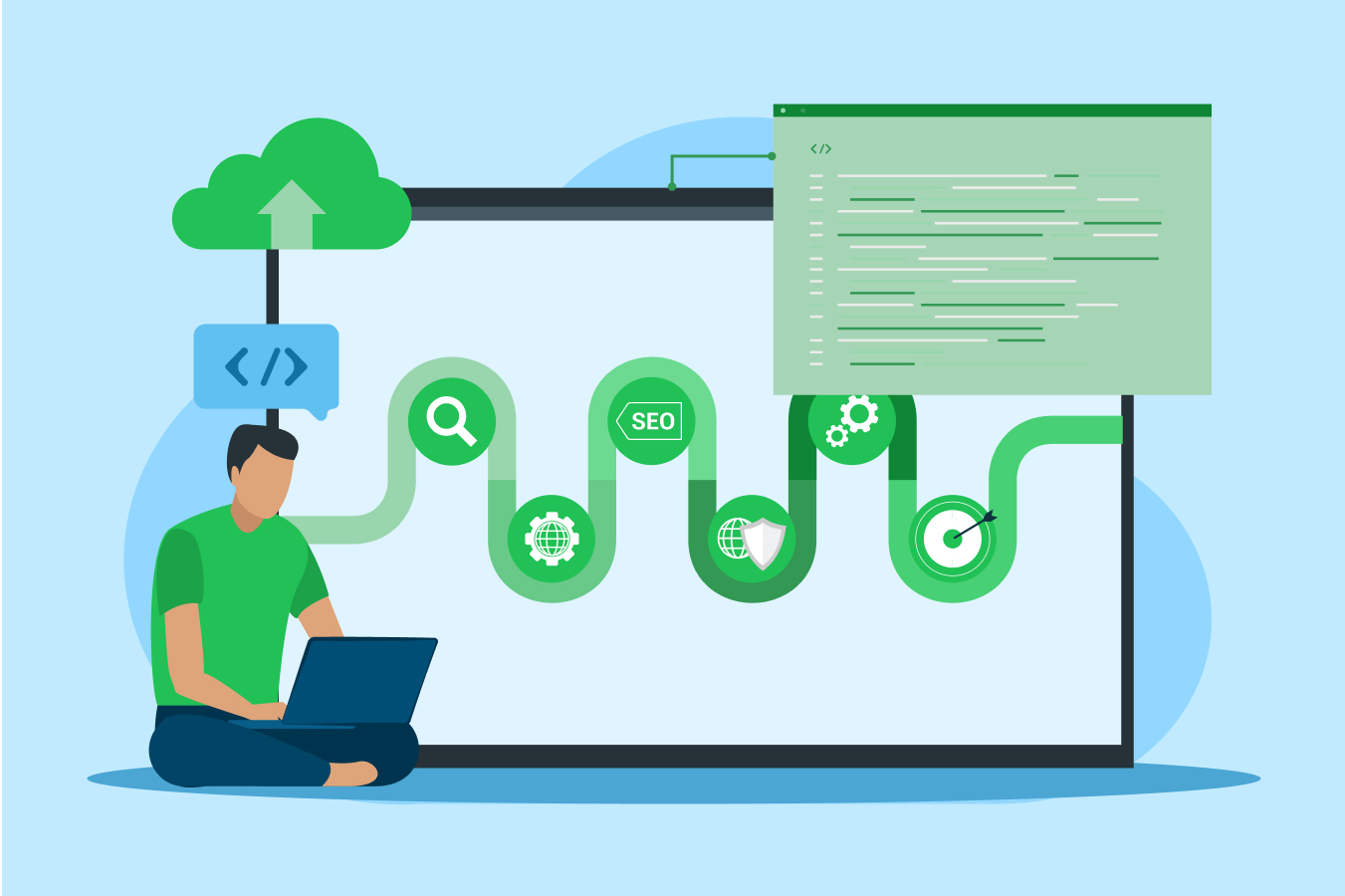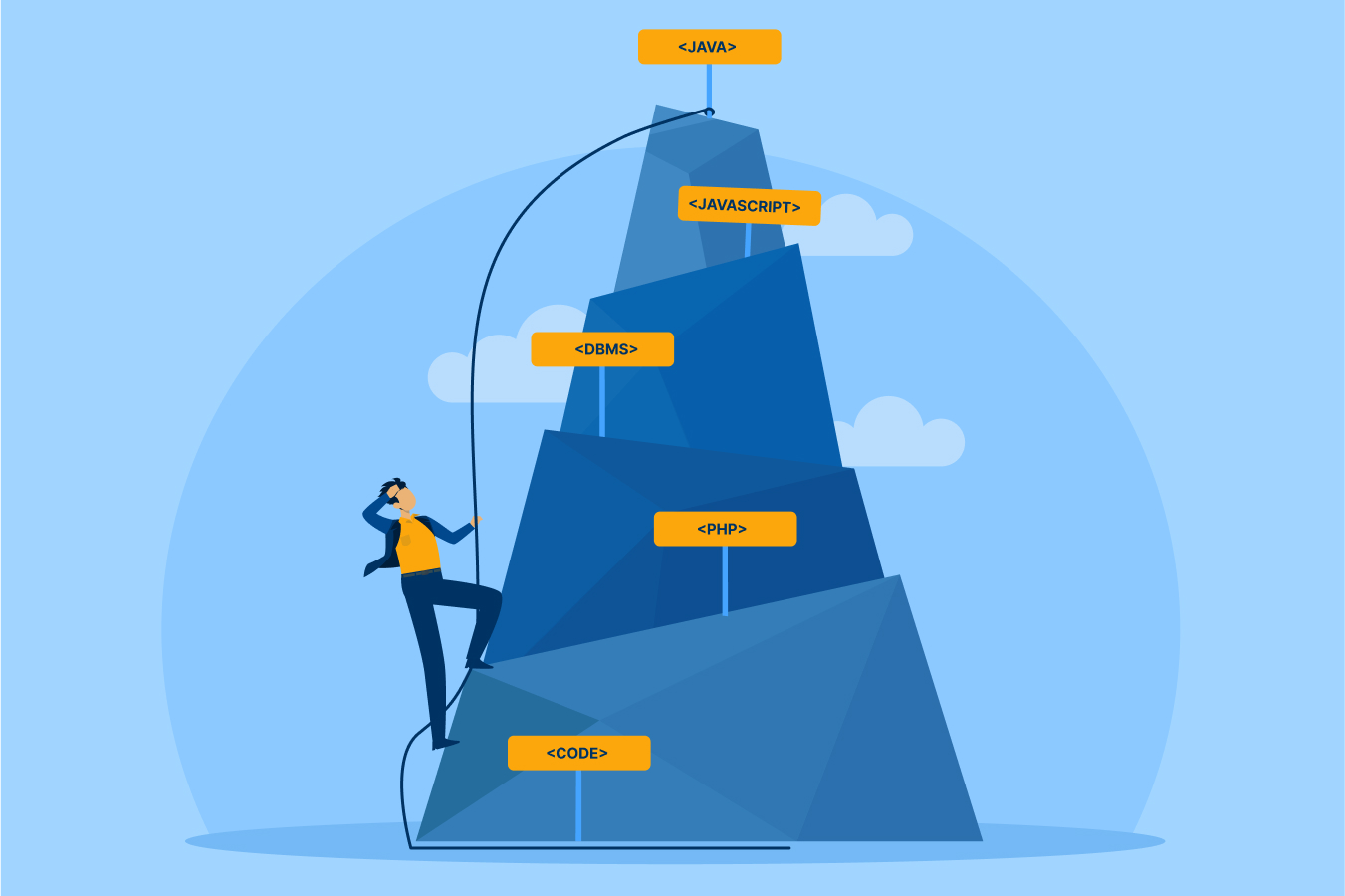How to Learn Web Development? A Step-ByStep Guide
With solid skills to work on every layer of the web development process, a web developer has a competitive advantage in a rapidly changing tech industry. For those with the talent and knowledge, web development can be a lucrative career choice with plenty of growth potential. In this blog, we will cover how to learn web development in a fun and easy way. We will go through the basics of HTML, CSS, and JavaScript and learn how they work together to create amazing websites.
What is Web development?
Web development is the process of designing, developing, and maintaining a website or web application. This includes a wide range of tasks like coding, technical design, UI design, testing, and launching the website or application. There are three main types of web development, front-end development, back-end development, and full-stack development.
The front-end development involves designing the look and feel of the website or application. The back-end development focuses on the databases, logic, APIs, and other server-side elements. Full-stack web development encompasses both backend and frontend tasks. It is a more comprehensive approach to web development where the developers are responsible for creating the entire website or app.
Steps on How to Learn Web Development
Wondering how to learn web development? Here are some of the web development skills you need to acquire.
Step 1: Get Necessary Tools
Before starting to learn web development, make sure you have the following tools.
- Computer Specifications: Your computer must have an Intel i5/i7 processor for Mac and should have at least 8GB of RAM.
- Text Editor: Use a text editor like Notepad++ (for Windows) or Atom (for Mac, Windows, and Linux) to help you write code efficiently.
- Web Browser: Install a variety of web browsers like Chrome, Safari, Edge, Firefox, Brave, or Opera to perform cross-browser testing of the website. This helps ensure that it works on different browsers.
- Local Web Server: Set up a local web server using XAMPP (for Mac/Windows/Linux) or MAMP (for Mac/Windows) to test layouts and new features without publishing them online
Step 2: Choose an Area of Specialization
As you proceed with discovering how to learn web development, it is important to choose a specific area to focus on. This could include front-end, back-end, or full-stack.
- Front-end Development: In this specialization, you will work on the parts of the website that users see and interact with.
- Back-end Development: Here, you will deal with behind-the-scenes aspects like databases and servers.
- Full-Stack Development: In this specialization, you will have to handle all parts of a website’s creation, including the front-end and back-end.
Step 3: Learn Front-End/Back-End Programming Languages
Get in-depth knowledge of important front-end and back-end development languages, such as the following:
- HTML: The use of HTML tells a website how to look and what information to show, like paragraphs and images. Therefore, you should learn how to use HTML tags, attributes, elements, and properties. With these, you can enhance the responsiveness and functionality of your website.
- CSS: The application and understanding of CSS (cascading style sheets) control how things look on a website, like colors, fonts, layouts, and other visual elements on the website. You should be familiar with CSS selectors, properties, and syntax to seamlessly design website layout and style elements. This will further help you in creating responsive designs that adapt to different screens for a better user experience.
- JavaScript: The programming in JavaScript adds interactive features to make websites more engaging and responsive. This enables the developers to use the same code to optimize their website across all platforms. JavaScript is an ideal scripting language for dynamically updating content, animating images, and controlling multimedia.
- Python: It is a popular back-end programming language used to build websites and web applications. It handles tasks like data processing, communication with databases, URL routing, and security. Developers prefer Python because of its multipurpose frameworks, fast processing, and simpler syntax as compared to other languages. Check out online Python courses to learn the basics.
- ReactJS: ReactJS is a popular web development tool known for its flexible and reusable components. It allows developers to create high-performance, cost-effective applications easily and build complex interfaces. An online React course is worth taking to improve your skills.
- SQL: SQL is used in web development for managing large amounts of data by efficiently organizing and retrieving information through databases, tables, and queries. Take an online SQL for data analytics course to learn how to write and execute correct database queries.
- Java: In web development, the use of Java allows you to write, compile, and debug code easily while ensuring security through an object-oriented approach. Taking a Java course introduces you to its security features, cost-effectiveness, and portability for success in web development.
- C++: C++ is a powerful web development language for creating fast, high-performing applications, improving user experience, and attracting search engine attention. By enrolling in an online C++ course, you will achieve better results in the web development process.
Step 4: Understand the Basics of Back-End Development
Mastering web development requires an understanding of back-end development basics. This involves learning about the structure of the overall website and its elements as well storage of information.
- How to Manage Servers: A web server is essential to store, process, and deliver requested information to the users. Therefore, to learn web development, you should gain a basic understanding of servers and related concepts like cloud hosting, serverless architecture, and other aspects of managing large databases.
- Working with Databases: You need to gain an in-depth knowledge of databases to organize data in logical structures for quick retrieval. This allows the creation of an efficient website. Different organizations have different database needs. An understanding of Structured Query Language (SQL) for organized data and NoSQL for unorganized information is necessary to integrate your website with the correct database.
Step 5: Know Website Architecture and Design
Website design involves organizing pages in such a way that the colors, fonts, and layout of a webpage influence how visitors see and interact with the site. Overall, to become proficient in web development, you need to know the target audience, site goals, and navigational structure (how people can easily find things on it).
Step 7: Learn About Other Development Tools & Packages
In addition to the basics, you need to understand important tools that make coding easier.
- Package Managers: These are helpful tools that install necessary libraries and dependencies for front-end development, making it easier to integrate third-party software.
- Build Tools: These are computer programs that help with certain time-saving tasks like running servers, debugging, organizing code, etc.
- Version Control: This is important for managing changes in code over time. Git is a tool for tracking changes and efficiently updating them, while GitHub is a platform for developers to store and share their Git files.
- Responsive Design: Responsive design ensures websites function optimally on various devices, ensuring a visually appealing and functional experience for users on computers and phones.
- JavaScript Frameworks: JavaScript frameworks, such as Bootstrap, provide pre-written code blocks, enhancing web development efficiency by saving time on routine tasks like animations.
Step 8: Practice By Working on Projects
If you want to improve your skills, building projects is a great way to do it. You can start with simple projects and work your way up to more challenging ones. For example, you can start practicing with web development projects to help enhance your web development skills.
Where can One Learn Web Development?
To understand where to learn web development, one needs to find the right platform. Internshala provides a beginner-friendly web development course that covers all aspects of building websites, including HTML/CSS, MySQL, PHP, JavaScript, and React. Here are the details of the course:
- Duration: 8 weeks
- Mode of Learning: Online
- Number of Modules: 7 modules, including practical assignments and a final project.
- Placement Assistance: Yes
- Certificate: An accredited certification from NSDC (National Skill Development Corporation) and Skill India.
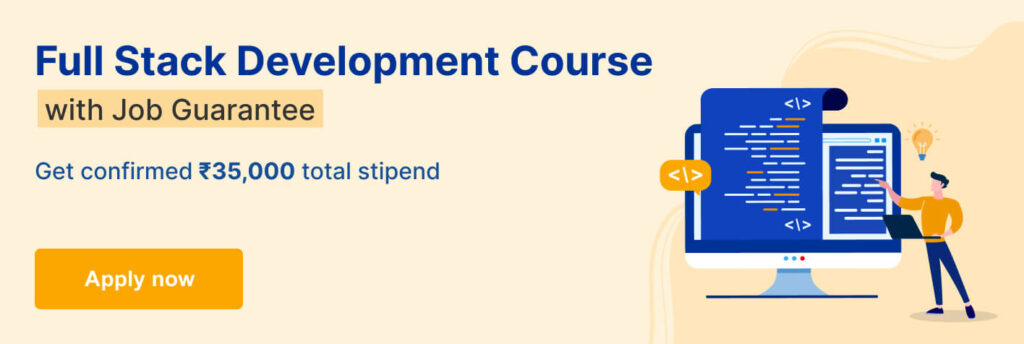
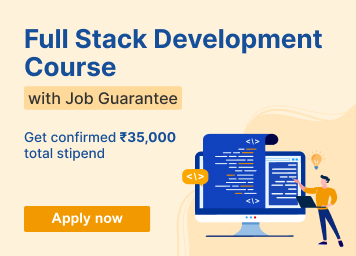
Web Development Skills
You require a combination of technical and soft skills to excel in the field of web development. Some of these skills are as follows:
- Front-end Development Skills: A web developer is proficient in HTML and CSS. These enable seamless development and implementation of different styling elements like fonts, colors, and layouts.
- Back-end Development Skills: You should be proficient in any one or more programming languages, such as Python, Ruby, Java, etc. Additionally, familiarity with frameworks (Django, Express.js, Ruby on Rails), servers, databases, and cybersecurity is also essential.
- Responsive Web Designing Skills: To work as a web developer, you must know how to create a responsive web design. This is a crucial aspect for improving user experience because if your website is responsive on multiple devices, the number of users will increase.
- Analytical Skills: A web developer should be able to identify errors in the code and make changes accordingly. These skills ensure the code is accurate and the website is functioning properly.
- Collaboration Skills: Web development requires collaboration as an entire team with differently skilled individuals working together on the same project. With collaboration skills, you can work effectively with others and ensure timely completion of development projects.
- Testing and Debugging Skills: You should be familiar with testing and debugging processes and practices to ensure your website or application runs smoothly and is secure.
Web Developer Role and Responsibilities
The primary role of a web developer is to design and create websites and web applications. However, there are some other responsibilities they undertake during their work. Here are some of them:
- Gather and determine specifications and requirements based on the project’s technical needs.
- Create website layout with HTML and CSS.
- Write executable and efficient code by implementing the best web development practices.
- Maintain software documentation.
- Integrate data from various back-end services and databases.
- Collaborate with cross-functional teams to achieve the visual design intent.
- Maintain, expand, and scale the website or application.
Future Scope of Web Development
The job outlook for web development remains positive with a 16% growth. This is despite new technologies like AI and ML gaining prominence and leading to automation of some web development tasks. Let us look at some future trends in web development to understand its evolving scope:
- The introduction of artificial intelligence and machine learning is significantly impacting the tech landscape. Employers now look for web developers who can integrate AI and ML technologies into their websites to create more interactive and personalized sites that work with prediction and enhance the user experience.
- Another notable trend is progressive web apps (PWAs). These are web applications that provide users with an app-like experience but are built with web technologies like HTML, JavaScript, and CSS. They have gained popularity because of their ability to work offline, cross-device functionality, and push notification features. Developers familiar with this technology will have a competitive edge in the future job market.
- The requirement for cyber security skills in a web developer is also on the rise with the increasing reliance of individuals and businesses on digital platforms. Employers seek professionals who can integrate cybersecurity best practices and ensure compliance with security standards in the web development process.
Web Developer Salary Trends
On average, a web developer’s salary in India is ₹10.8 LPA. They may receive additional bonuses based on the criteria specified by their employment contract and company policy. Let us take a look at some of the web developer salary trends:
- The average salary range of a web developer is ₹7.2 LPA to ₹18 LPA.
- A fresher web developer earns ₹5 LPA to ₹8 LPA, whereas an experienced web developer earns between ₹12 LPA to ₹18 LPA.
- Bangalore and Pune are the cities where you can find high-paying web development jobs. The average salary here is ₹15 LPA. In Delhi NCR, you can expect to earn ₹13.5 LPA.
- Among the specializations in the web development field, back-end development jobs pay the most. The average salary in the domain is ₹13 LPA. Other domains like big data, mobile, front-end, and full-stack development pay ₹11.9 LPA, ₹11.8 LPA, ₹10 LPA, ₹11 LPA, respectively.
- The average salary of a web developer in the US is $79,503 per annum and in the UK is £42,634 per annum.
Conclusion
When deciding how to learn web development, you need to have the right tools and specialize in an area. You also need to understand how both the front-end and back-end of a website function. After a web development course students can get lucrative web development internship opportunities.
Learning about website design using languages like HTML, CSS, JavaScript, React, PHP, and MySQL will make you better at your job. If you are applying for a job in the web development domain, follow blogs on job tips – an interview guide to ace your interview.

